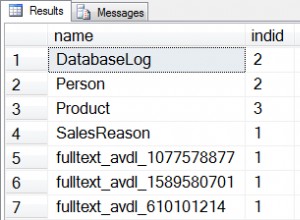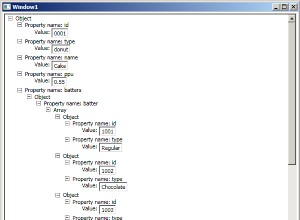Musisz być tutaj trochę kreatywny. Coś takiego jak poniżej działałoby jako sprzężenie ORAZ z danymi wielowymiarowymi:
<?php
require 'php/phpConnection.php';
// ======================================================================
// Create a join query (way faster than several separate ones!)
$sqlquery =
"SELECT SSSA.id, SSS5.educationalname" .
" FROM supportstaff_section1_a SSSA" .
" LEFT OUTER JOIN supportstaff_section5 SSS5 ON SSS5.id = SSSA.ID";
// ======================================================================
// Run the query and get our results
$resultarray = array();
if ($resource = mysql_query($sqlquery)) {
while ($curarray = mysql_fetch_assoc($resource)) {
// Create an array, if it doesn't exist
if (!isset($resultarray[$curarray["id"]]))
$resultarray[$curarray["id"]] = array();
// Add to the array, if not null
$curstring = (string) $curarray["educationalname"];
if ($curstring != "")
$resultarray[$curarray["id"]][] = $curstring;
}
mysql_free_result($resource);
}
// ======================================================================
// Convert from a keyed array to a standard indexed array (0, 1, 2, etc.)
$finalarray = array();
foreach ($resultarray as $id => & $data) {
// Start with just ID
$newarray = array(
"id" => $id
);
// Get the data, if we have any
if (count($data))
$newarray["educationalnames"] = & $data;
// Add to our final array and clear the newarray
$finalarray[] = & $newarray;
unset($newarray);
}
// ======================================================================
// Get the JSON of our result
$jsonresult = json_encode($finalarray);
// ======================================================================
// Echo it to test
echo $jsonresult;
// ======================================================================
// Close the database
mysql_close($con);
?>
A wynikowe $jsondata wyglądałoby tak (ale oczywiście nie tak rozwikłane):
[
{
"id": "8m8wwy",
"educationalnames": ["GCSE - English", "GCSE - Maths"]
},
{
"id": "wiL7Bn"
},
{
"id": "zAw6M1"
}
]




